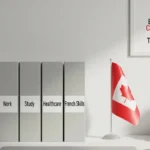
How to Navigate Ontario’s Health Care System: A Practical Guide for Newcomers
Moving to Ontario brings many challenges—and understanding how to access health care is one of the most important. Ontario’s publicly funded health system (OHIP) provides essential medical services to eligible residents, but eligibility rules, primary-care access, and options for people without coverage can be confusing. This guide explains who qualifies for OHIP, how to find primary care, when to use urgent care or the emergency room, how to get specialist referrals, and practical tips for people who do not yet have OHIP.
Who is eligible for OHIP (Ontario Health Insurance Plan)
OHIP covers medically necessary services for Ontario residents who meet residency and presence requirements. To qualify you must:
- Have your primary residence in Ontario; and
- Be physically present in Ontario for at least 153 days in any 12-month period and within the first 183 days after moving to the province.
Permanent residents and Canadian citizens who meet the residency requirement are covered. Some temporary residents are also eligible, including:
- Valid full-time work permit holders employed in Ontario for an Ontario employer (typically six months or more);
- Applicants for permanent residence who have an acknowledgement of receipt (AOR) for their federal PR application;
- Participants in specific federal programs (Live-in Caregiver, Seasonal Agricultural Worker);
- Temporary Resident Permit holders in specified classes;
- Full-time clergy serving in the province for at least six months; and
- Convention refugees or other protected persons.
Accompanying spouses and dependents of eligible workers may also qualify. If you are unsure of your status, confirm eligibility before relying on OHIP.
Your first point of contact: primary care and family doctors
Primary care—family physicians (general practitioners) or nurse practitioners—is the usual gateway to the health system. Primary care providers:
- Diagnose and treat common conditions;
- Provide preventive care and chronic disease management;
- Issue referrals to specialists when required; and
- Coordinate tests such as blood work and imaging.
A family doctor who registers you as a long-term patient is ideal, but many newcomers face long waitlists to find one. To secure primary care:
- Register with provincial programs that link patients to family doctors if available in your area;
- Call local clinics directly to ask if they are accepting new patients; and
- Use walk-in clinics or virtual clinics while you wait for a family doctor.
You must ordinarily have OHIP to register with most family practices; otherwise use alternative options below.
Alternatives if you do not have a family doctor
If you cannot secure a family physician quickly, consider these options:
- Walk-in clinics
- Treat minor illnesses and injuries without an appointment.
- OHIP covers services for cardholders; uninsured patients may pay per visit (roughly $60–$150).
- Clinics can often provide referrals to specialists.
- Virtual clinics and telemedicine
- Consult doctors by phone or video through platforms that may offer same-day appointments.
- OHIP covers virtual visits if both patient and provider are in Ontario and the patient has OHIP; otherwise private fees or insurance apply.
- Community Health Centres (CHCs)
- CHCs provide primary care and social supports and sometimes serve patients without OHIP.
- Services often include mental-health support, settlement assistance, and referrals.
- Specialty clinics
- Certain specialties operate on referrals; some accept direct or urgent referrals for specific services.
- Specialist wait times vary widely.
How to get a referral to a specialist
Most specialists require a referral from a family doctor or nurse practitioner. The typical steps are:
- See a primary care provider and discuss symptoms.
- If specialist care is needed, your provider issues and sends a referral. You may request a specific specialist.
- The specialist’s office assigns priority and appointment timing; wait times depend on urgency and specialty.
- Follow up with the specialist’s office if you do not hear back.
Specialist care and tests ordered by specialists are generally covered by OHIP for eligible residents. Without OHIP you will likely pay out of pocket.
Emergency room vs urgent care: where to go
Go to the emergency room (ER) or call 911 for life-threatening or time-sensitive conditions, including:
- Severe chest pain, stroke symptoms, severe breathing difficulty;
- Major trauma, heavy bleeding, or seizures; or
- Severe allergic reactions or loss of consciousness.
Use urgent care centres for conditions that need quick attention but are not life-threatening, such as:
- Sprains, minor fractures, stitches, moderate burns, or non-severe infections.
ERs and urgent care operate on triage: the most serious cases receive priority. If you are unsure where to seek care, call Telehealth Ontario for advice.
What OHIP covers — and what it doesn’t
Covered by OHIP (medically necessary services):
- Visits to family doctors and specialists;
- Hospital stays and publicly funded procedures;
- Selected diagnostic tests and imaging ordered by physicians;
- Ambulance services in medically necessary cases; and
- Some dental surgeries performed in hospital.
Not covered by OHIP (commonly out-of-pocket or insured separately):
- Prescription drugs (outside hospital inpatient coverage);
- Most dental services;
- Routine vision care and corrective lenses;
- Paramedical services (physiotherapy, massage, chiropractic) in many cases; and
- Cosmetic procedures.
When travelling to another Canadian province with a valid Ontario card, OHIP generally covers medically necessary hospital and physician services.
Applying for OHIP: documents and process
To apply for OHIP, you must apply in person at a ServiceOntario centre and provide three documents that together prove identity, Ontario residency, and OHIP-eligible status. Examples include:
- Identity (original document with name and signature);
- Proof of Ontario residence (lease, utility bill, bank statement); and
- Proof of Canadian citizenship, permanent resident status, or eligible temporary status.
After registration, expect to receive your health card by mail within several weeks. Keep printed and digital copies of your immigration and residency documentation handy to speed the process.
Accessing care without OHIP — practical tips
If you do not (yet) have OHIP, consider these steps:
- Maintain private health insurance (often required for study permits and some temporary visas). University students usually have UHIP or equivalent coverage.
- Carry printed proof of private insurance and clarify billing procedures with clinics and diagnostic providers in advance. Some facilities will bill insurers directly; others require upfront payment and reimbursement later.
- Choose clinics and diagnostic centres familiar with international or uninsured patients to avoid administrative complications.
- For urgent problems, urgent care centres are generally cheaper than ERs for non-life-threatening issues.
- For required travel documents (such as Super Visa visitors), ensure your policy meets minimum government thresholds (for Super Visa holders, minimum coverage is typically mandated).
Diagnostic testing and imaging
Most routine tests (blood work, X-rays, basic imaging) are ordered by your physician and performed at diagnostic centres. Imaging that requires scheduling (ultrasound, MRI, specialized scans) usually requires an appointment. Coverage depends on OHIP eligibility and the type of test; uninsured patients often pay out of pocket.
Practical checklist for newcomers
- Apply for OHIP as soon as you meet residency requirements.
- Keep copies of immigration documents, proof of address, and identity ready.
- Register with a family doctor where possible; use walk-in or virtual clinics in the interim.
- For urgent but non-life-threatening issues, choose urgent care over the ER.
- If uninsured, confirm billing practices with your provider and keep private insurance details accessible.
- Keep records of any referrals, test requisitions, and appointment confirmations.
Final note
Knowing how to navigate Ontario’s health system makes a significant difference in your settlement and wellbeing. While OHIP covers many essential services, gaps remain—especially for newcomers who arrive without immediate eligibility. Plan ahead, secure appropriate coverage, and use community resources and virtual care options while you complete OHIP registration. If in doubt, ask your primary-care provider or local settlement agency for direction.
For a consultation about Immigration options, reach out to the CAD IMMIGRATION today!





